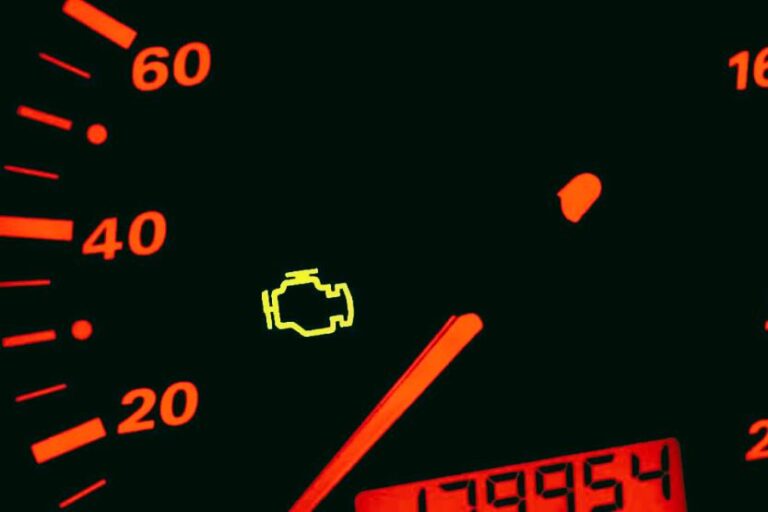Check Engine Light Flashing Then Stays On

The dreaded Check Engine Light (CEL). It's a sight no driver wants to see illuminated on their dashboard. But what does it mean when that light starts flashing frantically, then settles into a steady glow? This article delves into the possible causes, diagnostic procedures, and what you should do when faced with this common, yet potentially serious, automotive problem.
Flashing CEL: Immediate Action Required
A flashing Check Engine Light is not the same as a solid one. A flashing light indicates a severe issue that requires immediate attention. Specifically, it usually signifies an engine misfire occurring with enough frequency to potentially damage the catalytic converter. Think of the catalytic converter as the emission control system's final filter, reducing harmful pollutants. Raw, unburnt fuel entering the converter due to a misfire can cause it to overheat and melt, leading to costly repairs. A new converter can easily run into the thousands of dollars, depending on the vehicle.
Therefore, if your Check Engine Light is flashing, it's crucial to reduce speed and proceed with caution. Avoid hard acceleration or heavy loads. If possible, pull over to a safe location and call for roadside assistance to have your vehicle towed to a trusted mechanic. Continuing to drive with a flashing CEL could exacerbate the problem and lead to further damage.
Possible Causes of Misfires
What causes these damaging misfires? The culprit could be one of several components in your engine's ignition or fuel systems. Here are some of the most common suspects:
- Faulty Ignition Coils: Ignition coils provide the high voltage spark necessary to ignite the air-fuel mixture in each cylinder. A failing coil can lead to a complete misfire in one or more cylinders. Modern vehicles often have individual coils for each cylinder, making diagnosis easier.
- Worn Spark Plugs: Spark plugs wear down over time, reducing their ability to efficiently ignite the fuel mixture. This is especially true with older spark plugs that have not been replaced per the manufacturer's recommended service interval. Inspecting the plugs can provide clues; a fouled or damaged spark plug is a common find.
- Fuel Injector Problems: Fuel injectors spray a precise amount of fuel into each cylinder. A clogged, leaking, or malfunctioning injector can disrupt the air-fuel ratio, leading to a misfire. Professional fuel injector cleaning or replacement might be necessary.
- Vacuum Leaks: Vacuum leaks can disrupt the engine's air-fuel mixture, causing it to run lean. This can trigger a misfire, especially at idle or low speeds. Common leak locations include vacuum hoses, intake manifold gaskets, and throttle body seals.
- Low Compression: Low compression in a cylinder indicates a more serious internal engine problem, such as worn piston rings or damaged valves. A compression test can confirm this diagnosis. This is often the most expensive issue to repair.
The Solid CEL: Lingering Issues
Once the flashing stops and the Check Engine Light remains steadily illuminated, it signifies that the misfire *may* have subsided (although the underlying problem likely remains), or that a different, less critical issue is present. The engine computer, or Engine Control Unit (ECU), has detected a problem but deems it not immediately catastrophic. However, it still warrants investigation.
The solid Check Engine Light could be related to the initial misfire (e.g., a slightly leaky fuel injector that isn't causing a full misfire but is still throwing off the fuel trim), or it could be a completely separate issue, such as a faulty oxygen sensor, a loose gas cap, or a problem with the Evaporative Emission Control System (EVAP). The only way to know for sure is to retrieve the diagnostic trouble code (DTC) stored in the ECU's memory.
Decoding the Codes
Mechanics use an OBD-II (On-Board Diagnostics II) scanner to retrieve these DTCs. These codes are standardized across most modern vehicles and provide valuable information about the nature of the problem. For example, a code like P0301 indicates a misfire in cylinder #1, while P0420 suggests a problem with the catalytic converter's efficiency.
While some car owners purchase their own OBD-II scanners, understanding and interpreting the codes can be tricky. A professional mechanic has the experience and knowledge to accurately diagnose the problem based on the DTC and other diagnostic procedures.
Prevention and Maintenance
Regular maintenance is the best way to prevent Check Engine Light issues. Following the manufacturer's recommended service intervals for spark plug replacement, fuel filter changes, and other routine maintenance can help keep your engine running smoothly and reduce the risk of misfires. Also, pay attention to any unusual engine noises, vibrations, or changes in fuel economy, as these can be early warning signs of a potential problem.
Ultimately, a flashing Check Engine Light followed by a solid one is a call to action. Prompt diagnosis and repair can prevent more significant damage and ensure the long-term health of your vehicle's engine.
